Exhaust System Cost Estimator
Estimate Your Exhaust System Replacement Cost
Get an estimate for replacing your full exhaust system based on your vehicle type, material choice, and labor source.
Replacing your car’s exhaust system isn’t just about making it louder. A worn-out or damaged exhaust can hurt fuel efficiency, trigger check engine lights, and even let dangerous fumes into your cabin. If you’re wondering how much a full exhaust system costs, the answer isn’t simple-it depends on your car, the parts you pick, and where you get it done.
What’s Included in a Full Exhaust System?
A full exhaust system isn’t just the tailpipe you see sticking out the back. It’s a chain of components that starts at the engine and ends at the rear of the car. Here’s what’s typically included:
- Manifold or headers - connects to the engine cylinders and collects exhaust gases
- Precatalytic converter - reduces emissions early in the flow (on some vehicles)
- Main catalytic converter - required by law to clean exhaust gases
- Mid-pipe - connects the catalytic converter to the rear section
- Resonator - reduces noise before it reaches the muffler
- Muffler - controls sound levels
- Tailpipe - the final pipe that vents gases out the back
- Hangers, clamps, and gaskets - all the small parts that hold everything together
Some aftermarket kits skip the catalytic converter, but that’s illegal in most places and will fail emissions tests. Stick with complete, legal systems.
Factory vs. Aftermarket: What’s the Difference?
Factory exhausts are designed for your exact make and model. They’re quiet, reliable, and built to last. But they’re also expensive and hard to find unless you buy from a dealership.
Aftermarket systems come in three main types:
- Complete replacement systems - replace everything from the manifold to the tailpipe. Best for performance or major damage.
- Cat-back systems - replace everything from the catalytic converter back. Popular upgrade for sound and weight savings.
- Axle-back systems - only replace the rear section. Cheapest upgrade, mostly for looks and minor sound changes.
For a full system swap, you’ll want the complete replacement. Cat-backs are cheaper but don’t fix issues upstream, like a failing catalytic converter.
How Much Does a Full Exhaust System Cost?
Here’s what you can expect to pay in 2025, based on real-world data from repair shops and parts retailers:
| Vehicle Type | Parts Only (USD) | Parts + Labor (USD) |
|---|---|---|
| Compact Car (Honda Civic, Toyota Corolla) | $300-$600 | $700-$1,200 |
| Midsize Sedan (Honda Accord, Toyota Camry) | $400-$800 | $900-$1,600 |
| Full-Size Truck (Ford F-150, Chevrolet Silverado) | $600-$1,400 | $1,200-$2,500 |
| SUV (Honda Pilot, Ford Explorer) | $500-$1,000 | $1,100-$2,200 |
| Performance Car (Subaru WRX, Ford Mustang) | $800-$2,000 | $1,800-$3,500 |
| Luxury Vehicle (BMW 3 Series, Audi A4) | $1,000-$3,000 | $2,500-$5,000 |
Why such a big range? Two reasons: material and labor.
Stainless steel lasts longer and resists rust better than aluminized steel. Most factory systems use aluminized steel-it’s cheaper but corrodes after 5-8 years. Aftermarket stainless systems cost more upfront but can last the life of the car.
Labor varies by shop and complexity. A simple compact car might take 2-3 hours. A truck or luxury car with rusted bolts, multiple sensors, or complex routing can take 5-8 hours. Shops charge $80-$150 per hour, depending on location.

What Drives the Price Up?
Some things make the job more expensive than you’d expect:
- Rust - if the old system is fused to the frame or hangers, cutting it out takes extra time and tools. Some shops charge extra for "difficult removal."
- Multiple sensors - modern cars have oxygen sensors in the exhaust. If they’re damaged or need replacement, that’s $50-$150 per sensor.
- Specialty parts - European and Japanese performance cars often need custom-fit components. A BMW M3 exhaust can cost $2,000 just for the parts.
- Dealership markup - buying a factory exhaust from a dealership can cost 2-3x more than aftermarket. You’re paying for OEM branding, not better quality.
One real example: a 2018 Honda Civic had a cracked manifold and rusted mid-pipe. The owner got a full stainless steel system from a local shop for $1,450 total-$850 for parts, $600 for labor. The same job at a Honda dealer would’ve been $2,800.
Where to Buy and Install
You have three main options:
- Local exhaust shop - these specialize in exhausts. They know the common issues for your model, carry common kits, and often have lower labor rates than dealerships. Best for most people.
- Dealership - only choose this if you need factory parts for warranty reasons. Prices are high, and they rarely offer performance upgrades.
- DIY - if you have tools and experience, you can save $300-$800 on labor. But it’s messy, time-consuming, and dangerous if you don’t know what you’re doing. Rusty bolts can snap. Hot components can burn you. Sensors are easy to break.
Most people get the best value at an independent exhaust shop. Look for places that offer lifetime warranties on stainless systems. That’s a good sign they stand by their work.
When Should You Replace the Whole System?
You don’t need to replace everything just because one part is broken. But here are signs you’re better off with a full replacement:
- You hear loud rattling or roaring-especially under acceleration
- You smell exhaust fumes inside the cabin
- Your check engine light is on with codes like P0420 or P0430 (catalytic converter efficiency)
- There’s visible rust, holes, or broken hangers
- Your car failed an emissions test
- You’ve already replaced one part (like the muffler) and another is failing
If two or more of these apply, go full system. Patching it piece by piece ends up costing more over time.

What About Performance and Sound?
Many people upgrade their exhaust for sound or power. A full stainless system can reduce backpressure slightly, adding 5-15 horsepower on performance cars. But on a regular sedan? You’ll barely notice.
Sound is the real reason most people upgrade. A cat-back system with a performance muffler can make your car sound aggressive without being obnoxious. Brands like Borla, MagnaFlow, and Corsa offer different tones-from deep rumble to crisp sporty.
But remember: louder doesn’t mean better. Some systems drone at highway speeds and make long drives painful. Read reviews. Listen to YouTube videos of your exact car model with the same system.
How to Save Money Without Sacrificing Quality
You don’t need to pay $5,000 for a new exhaust. Here’s how to get the best value:
- Choose stainless steel over aluminized. It lasts longer and won’t rust through in 3 years.
- Buy from reputable brands: Flowmaster, Borla, MagnaFlow, Gibson. Avoid no-name eBay kits.
- Get quotes from 2-3 local shops. Don’t just pick the cheapest-ask about warranty and experience.
- Ask if they include new hangers and gaskets. Those are cheap parts, but critical for a quiet, secure install.
- Wait for sales. Many shops offer discounts in spring or fall.
One driver in Ohio replaced his 2015 Ford Escape’s entire exhaust for $1,100 with a stainless cat-back system. He saved $700 compared to the dealership quote and got a 5-year warranty. His car runs quieter and more efficiently now.
What Happens If You Don’t Replace It?
Ignoring a bad exhaust isn’t just about noise. It’s a safety and money issue:
- Toxic fumes - carbon monoxide can leak into the cabin, especially with a cracked manifold. It’s odorless and deadly.
- Lower fuel economy - a clogged or leaking system forces the engine to work harder.
- Engine damage - if the catalytic converter fails, it can melt and block exhaust flow. That can burn valves or damage the engine.
- Failing inspections - most states require emissions and exhaust checks. A broken system means no registration.
Don’t wait until your car won’t start or you’re coughing in the driver’s seat. Fix it before it becomes a bigger problem.
Is it cheaper to replace just the muffler or the whole exhaust system?
It depends. If only the muffler is rusted and the rest of the system is solid, replacing just the muffler saves money. But if you have rust on the mid-pipe, broken hangers, or a failing catalytic converter, replacing just one part won’t last. Most people end up spending more over time fixing multiple pieces. A full system replacement is often the smarter long-term choice.
Can I install a full exhaust system myself?
Yes, if you have the right tools and experience. You’ll need jack stands, a reciprocating saw or plasma cutter, wrenches, and safety gear. But rusted bolts often snap, sensors break easily, and alignment is tricky. Most DIYers end up spending more on replacement parts and time than they save. For most people, professional installation is worth the cost.
Do I need a new catalytic converter?
If your car is 10+ years old or has failed an emissions test, the catalytic converter is likely worn out. Replacing it with a new one is required by law in most places. Avoid used or unregulated converters-they’re illegal and often don’t work. Always use a certified, EPA-compliant unit.
How long does a full exhaust system last?
Factory aluminized systems last 5-8 years. Stainless steel systems last 10-15 years or more, even in snowy or coastal climates. Proper maintenance-like avoiding short trips and keeping the engine tuned-helps extend life. Driving on salted roads or off-road can shorten it.
Will a new exhaust improve my fuel economy?
If your old system was clogged or leaking, yes-a new system can improve fuel economy by 2-5%. But if your old exhaust was fine, a new one won’t make a noticeable difference. The biggest gains come from fixing leaks or replacing a failing catalytic converter.
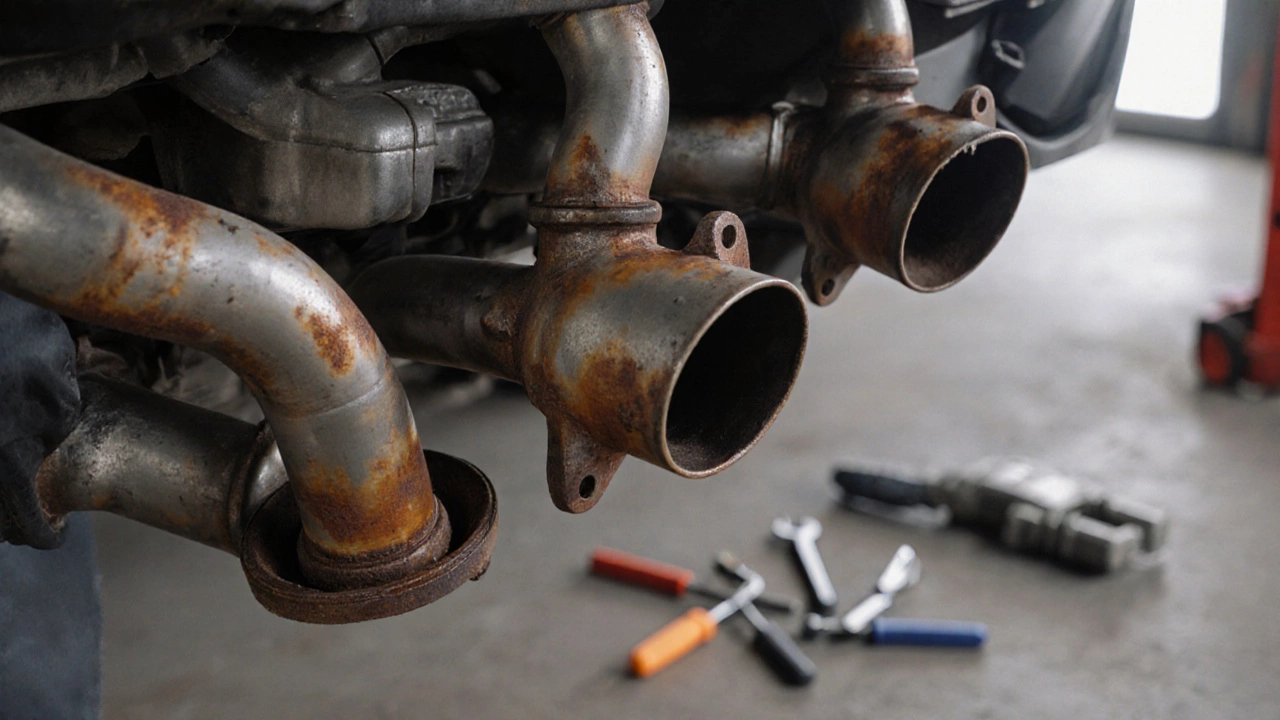
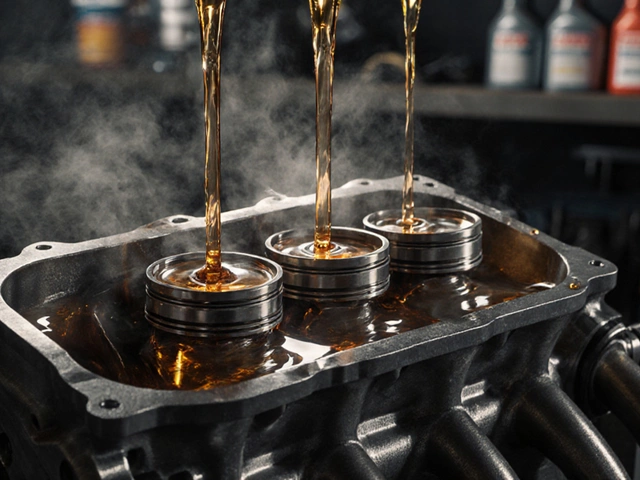


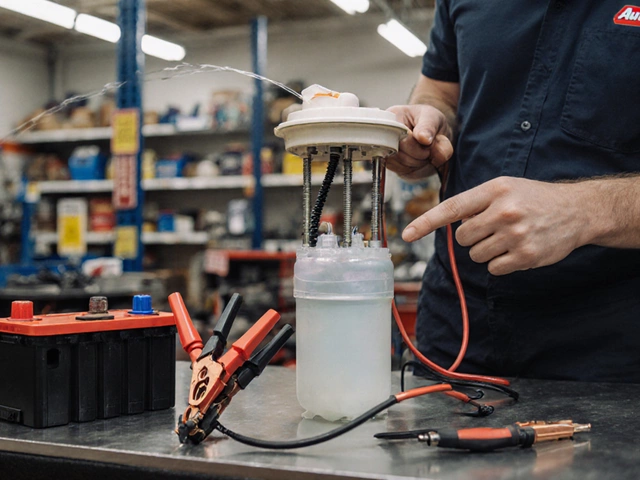
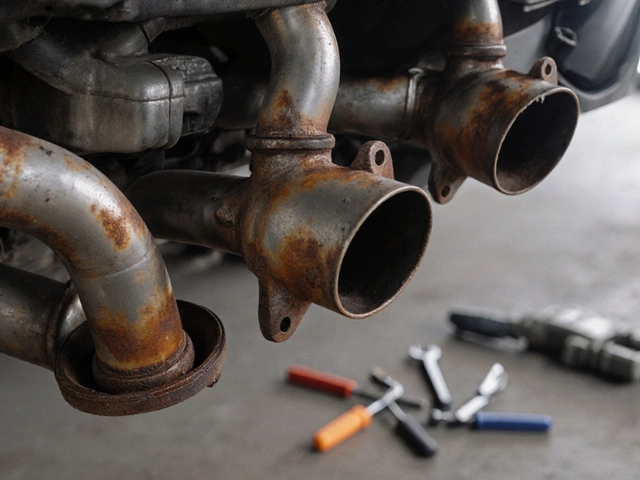
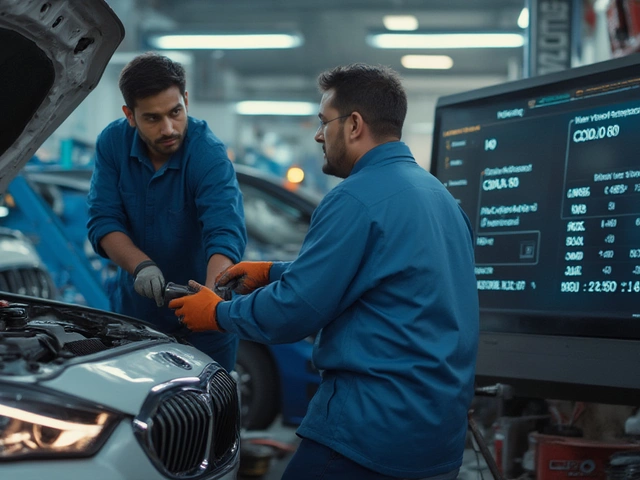




Write a comment